Back to Sidestreet Bannerworks
Click here to find out how your engine can be featured!
.


A 7/8"-scale deWinton
by Bert Horner
Zwischenwasser, Austria
Photos by the author except where noted
September, 2012
The steam chassis had aluminum frames and footplates; large, silver-soldered copper boilers (2mm wall thickness), heated by ceramic gas burners fed by a large gas tanks that sit on one end of the chassis. The steam motor is two cylinders, double acting. It is constructed of brass, with the cylinders turned out of square bar material. The drive is to one axle via reduction gears to ensure slow, steady running. The chassis were delivered complete with rotary reversing valves, needle-valve steam regulators, water-level glasses, safety valves set at 40 psi, displacement oilers, and pressure gauges. To cut down the water/oil mixture being freely sprayed out of the exhaust tube, a condensation tank with drain valve was fitted under the chassis.
The rebuild
The engine shown here was completely rebuilt by me, and is patterned after the 2'-gauge deWinton quarry engines used in Wales. It now has 2mm-thick brass frames and footplate. A rectangular water tank, made of 1mm-thick brass, with dummy rivets, was placed over the round gas tank. This gas tank was supplied by Regner Steam Models of Germany. The copper boiler is lagged with wood strips, held in place by brass boiler bands. Crew protection is provided by a waist-high brass plate at the front of the engine, which extends backwards down each side 30mm in typical deWinton style.
This is a large and heavy engine (3.7kg -- 8.14 pounds) and is closer to 7/8" scale than 16mm scale.
Running
Today, in mid August, the weather is perfect for a run -- 30°C (86°F) and not a cloud in sight. On this day, there was also no steam in sight once the cylinders had warmed up.
I first removed the water-tank lid and filled the gas tank. Next I filled the oiler with steam oil, and finally the boiler with filtered rain water. The boiler is large and I fill it with 330ml. of water. I cracked the gas valve, which is disguised as a brake stand on the left side of the open cab, and lit the burner at the chimney top. A soft "plop" informs me that the fire is burning and a look down the chimney (from a safe height) shows a blue flame. After a short wait until the ceramic is warm it still shows a blue flame, so I cut the flame back to give a nice, red glow from the burner.
While waiting for the water to boil I pull the cylinders away from the port block just a little and apply a couple of drops of steam oil between the port faces, then open the drain cock on the condensate tank.
After just over four minutes, the pressure gauge is showing just over 10 psi, so I eased forward the reverser in the cab and opened the regulator valve. A little water is pushed out between the cylinder and port faces as the engine begins to turn. This is followed by a steady stream of water from the condenser-tank drain valve. After a further minute or so the engine settles down to steady, dry running.
I close the drain valve and the engine, which was in the meantime coupled to a short train of open wagons filled with 4mm gravel, sets off at steady slow pace. The engine ran slowly and steadily for the next hour and 11 minutes before starting to slow down. I opened the gas valve a little and the engine picked up speed again. After two more minutes a light "plop" told me that the fire was out. The engine ran on for another 50 meters or so until it finally stopped.
It would be difficult to conceal radio control on this engine and doing shunting operations at ground level is, at my age, not as easy as it was a few years ago. However, at waist level one can shunt (switch) for an hour or more without having to service the engine.
For me, in the garden, the engine runs too long and becomes almost monotonous. Having said that, it is the perfect engine for exhibition running, say at midday when you need a break or when half of the crew is at lunch. It is also amazing how the open oscillating motor attracts the attention of visitors at exhibitions.
|
|
|
| Builder | Cla Neff and Peter Sidler (Switzerland); rebuilt by Bert Horner (Austria) |
| Date completed | 2003 -- rebuilt 2009 |
| Gauge | 1 (45mm) |
| Scale | Close to 7/8" |
| Boiler | Vertical, silver-soldered copper with center flue |
| Fittings | Safety valve, steam regulator, water-level glass, pressure gauge, additional (unused) bushing for whistle etc. (fitted with 6 mm plug), and one drain hole on side at bottom with 6 mm plug. |
| Fuel | Butane |
| Cylinders | Two oscillating, double acting; 10mm bore x 20mm stroke |
| Reversing gear | Regner rotary reversing valve, mechanically operated from cab |
| Lubricator | Displacement |
| Blowoff pressure | 40 psi |
| Dimensions | Length, 255mm; width, 110mm; height over stack, 195mm |
| Weight | 3.7kg (8.14 pounds) |

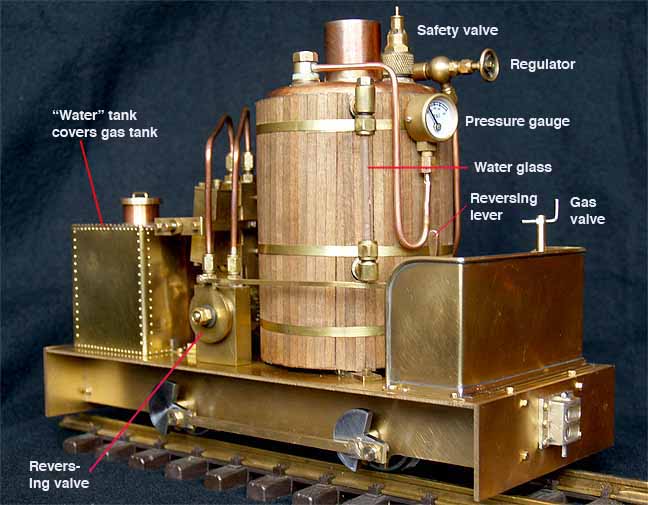


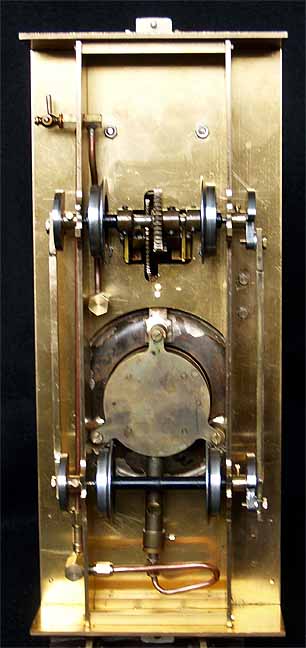
Below: The reversing quadrant.
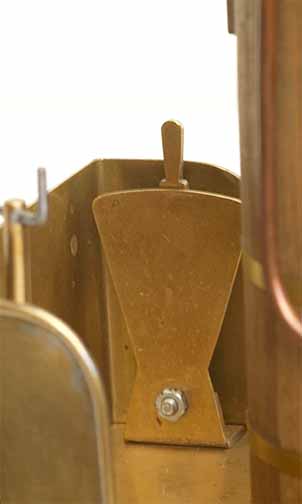


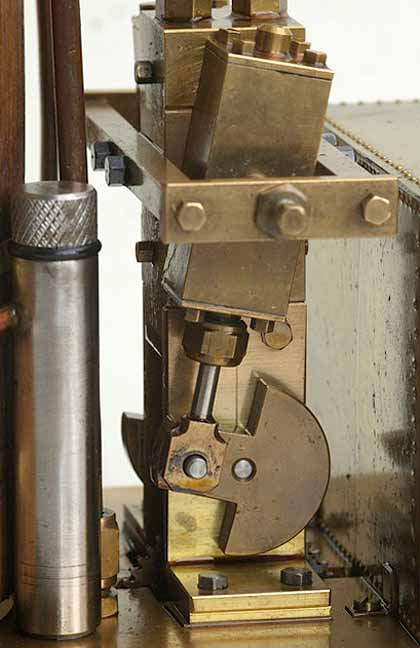


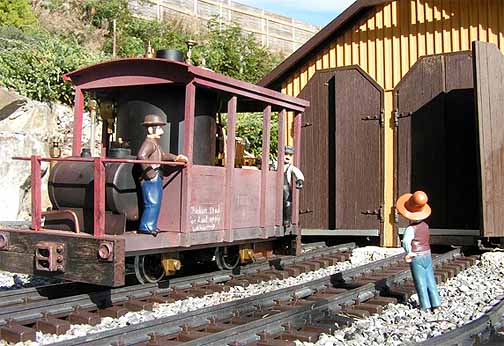
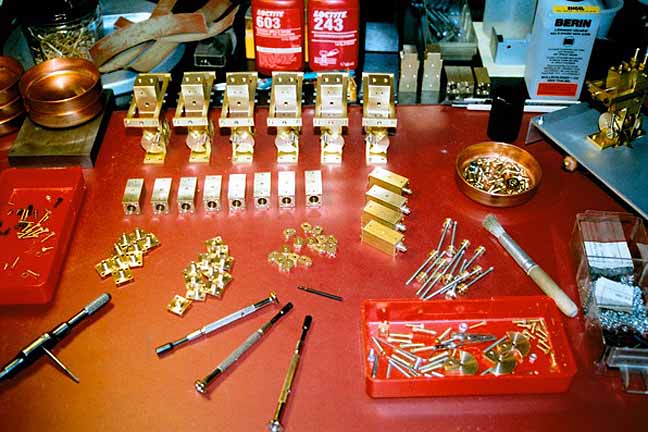
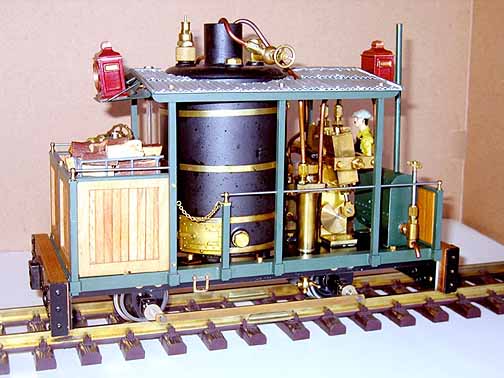

Above left: Peter Sidler's engine.
--Photo: P. Sidler
Below left: Cla Neff's locomotive. --Photo: Cla Neff


Back to Sidestreet Bannerworks
Click here to find out how your engine can be featured!
This page and its contents
Copyright Sidestreet Bannerworks, 2012